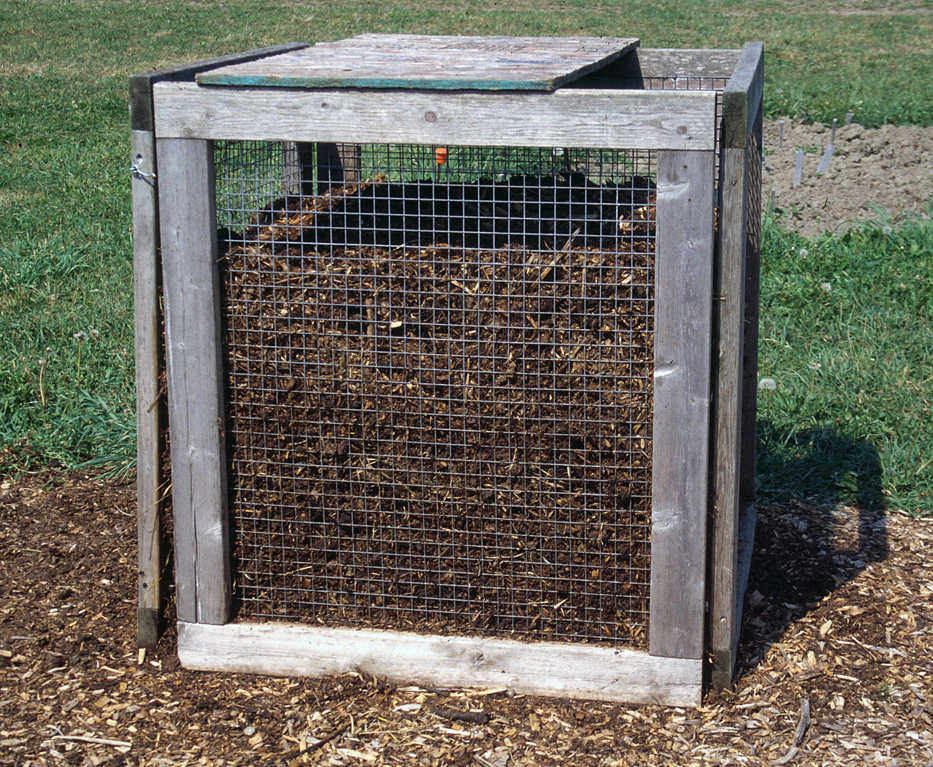Here’s a riddle: What will weed, feed and water your garden, and take care of your garbage?
“Ideal teenager” is not the answer. It’s compost!
Compost is hard to define. In some sense, the apple core I tossed on the ground a month ago is on its way to becoming a compost of some sort. But compost is usually taken to mean a pile of organic material — stuff that is or was living — deliberately assembled for relatively fast decomposition.
The finished product is a witches’ brew of partially decomposed vegetable and animal matter, teeming with living bacteria, fungi and animals. A key ingredient to a good garden.
Compost will “weed” your garden when applied as a mulch. Weeds have a hard time fighting their way to the light through a 1- or 2-inch blanket of compost laid over the soil. A well-made compost pile will get hotter than 140 degrees F, which is hot enough to kill most weed seeds (and most disease organisms) that might find their way into the pile as old plants, pulled weeds and other organic materials are added.
Of course, a weed is just a plant in the wrong place, and one welcome weed that the compost mulch brings to my garden is tomato. Tomato seeds resist the temperature of composting. Tomato plants are easy to weed out; some gardeners leave some to grow on and fruit.
Compost is rich in nutrients that will fertilize your garden.
The 10-10-10 on a bag of commercial fertilizer means the bag contains 10 percent nitrogen, 10 percent phosphate and 10 percent potash. These three nutrients are what plants need in greatest quantities, but they’re not the only nutrients needed.
What about more than a dozen other elements essential for plant nutrition? Corn stalks from last year’s garden, thistles that once poked their spiny heads up in meadows, and rinds from oranges eaten last winter rot together to form compost that provides a smorgasbord of essential nutrients.
Compost will not literally water your garden, but it will help your garden become more water-efficient. Water falling on the surface of a compost-enriched clay soil will be absorbed like a sponge, rather than gouging out rivulets as it runs across the soil surface.
Roots need to “breathe,” so they can’t do their job in sodden clay soils. Under those conditions, they can’t even take up water, so they wilt, just as they do from drought. Add some compost to such a soil, and the soil becomes better aerated so roots can function.
At the other end of the spectrum are sandy soils, into which water percolates easily but then just keeps going and runs out of reach of plants. Compost will act like a sponge to hold water in a sandy soil.
Compost will not take out your garbage, but it will take care of it. Watermelon rinds, corn cobs, old broccoli, old pizza — they all make smelly garbage but great compost. Bagged in plastic, garbage becomes a vile-smelling slime. Ground into your garbage disposal, it taxes septic systems and sewage plants. Instead, why not turn garbage into compost?
Compost, like bread, is best home-made. Making it entails science and art — if you want it to get hot and finish “cooking” quickly. Not to worry, though: Any pile of organic material will eventually turn to compost.
The one thing you can do to improve your composting, and it’s easy, is to make your compost in a bin. A bin might be home-made — from lumber or cinder blocks, for instance — or bought. It fends off scavengers, holds in heat and moisture, and makes the pile look like a compost pile rather than a garbage pile.

